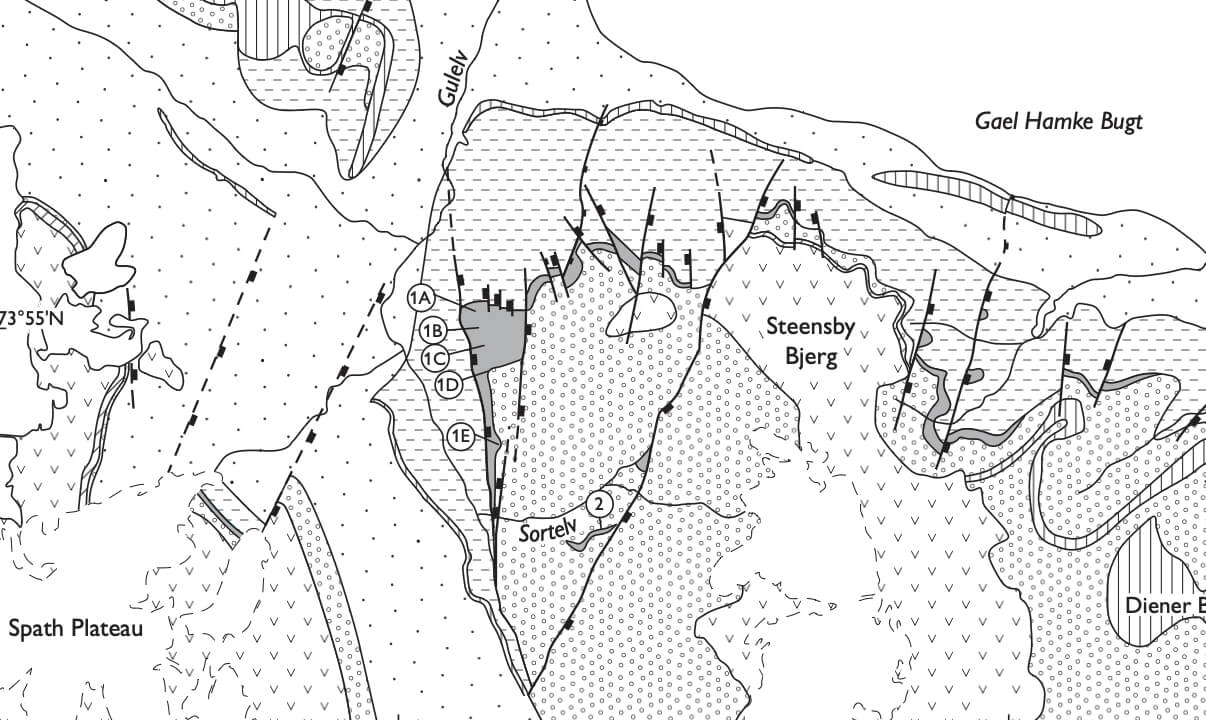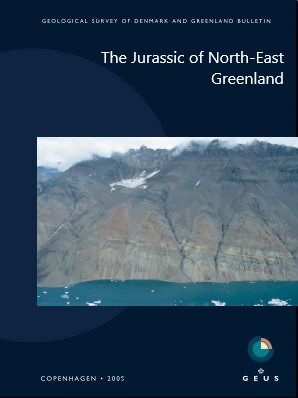
How to Cite
Share
Abstract
Dinoflagellate cysts of the Middle–Upper Jurassic succession on northern Hold with Hope have been studied in order to establish a biostratigraphic framework and to date the succession. The Pelion Formation is characterised by abundant Chytroeisphaeridia hyalina and Sentusidinium spp., with some Ctenidodinium thulium and Paragonyaulacysta retiphragmata in the lower part. Mendicodinium groenlandicum appears higher in the formation followed by Trichodinium scarburghense in the upper part. The succeeding Payer Dal Formation contains Scriniodinium crystallinum, Rigaudella aemula and Leptodinium subtile in the lower part and Dingodinium jurassicum and Prolixosphaeridium granulosum in the uppermost part. The Bernbjerg Formation contains abundant Sirmiodinium grossii and Gonyaulacysta jurassica. Adnatospahaeridium sp., Cribroperidinium granuligerum, Glossodinium cf. dimorphum and Scriniodinium irregulare appear in the lower part of the formation, followed by Avellodinium spp. in the highest part. The dinoflagellate cyst assemblages in the Pelion Formation indicate an Early–Late Callovian age (C. apertum – P. athleta Chronozones). This is supported by ammonites in the lower part of the formation, which refer to the C. apertum and P. koenigi Chronozones. A significant hiatus, from Late Callovian to Middle Oxfordian, is present between the Pelion Formation and the overlying Payer Dal Formation. The age of the Payer Dal Formation is Middle Oxfordian to earliest Late Oxfordian (C. tenuiserratum – A. glosense Chronozones). The Payer Dal Formation is conformably overlain by the Bernbjerg Formation of Late Oxfordian to possibly earliest Kimmeridgian age (A. glosense – P. baylei Chronozones). The A. glosense Chronozone is also documented by abundant ammonites in the lowermost part of the formation.
How to Cite
Share
Downloads
Edited by L. Stemmerik and S. Stouge
The Jurassic rift succession of East Greenland has been intensely studied over the last 25 years, particularly within the main outcrop areas of Jameson Land and Wollaston Forland. The more isolated and poorly known outcrops on Traill Ø, Hold with Hope, Hochstetter Forland and [...]










